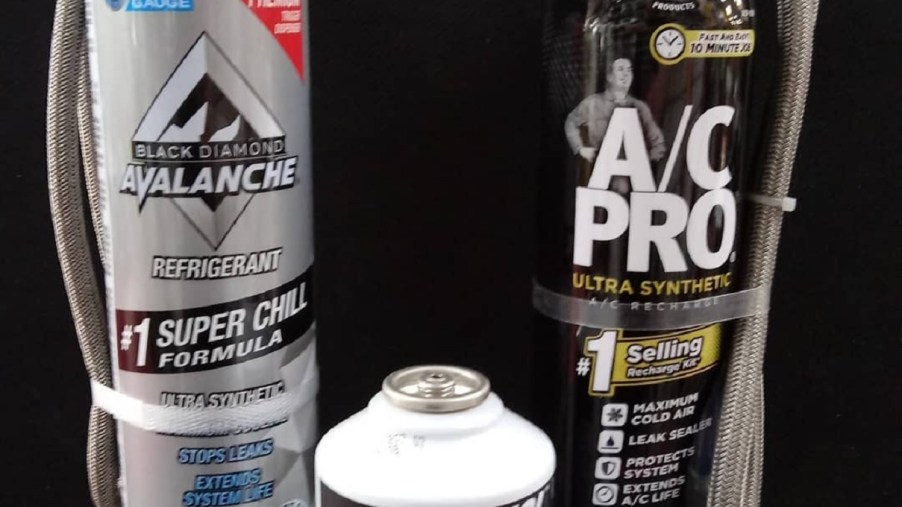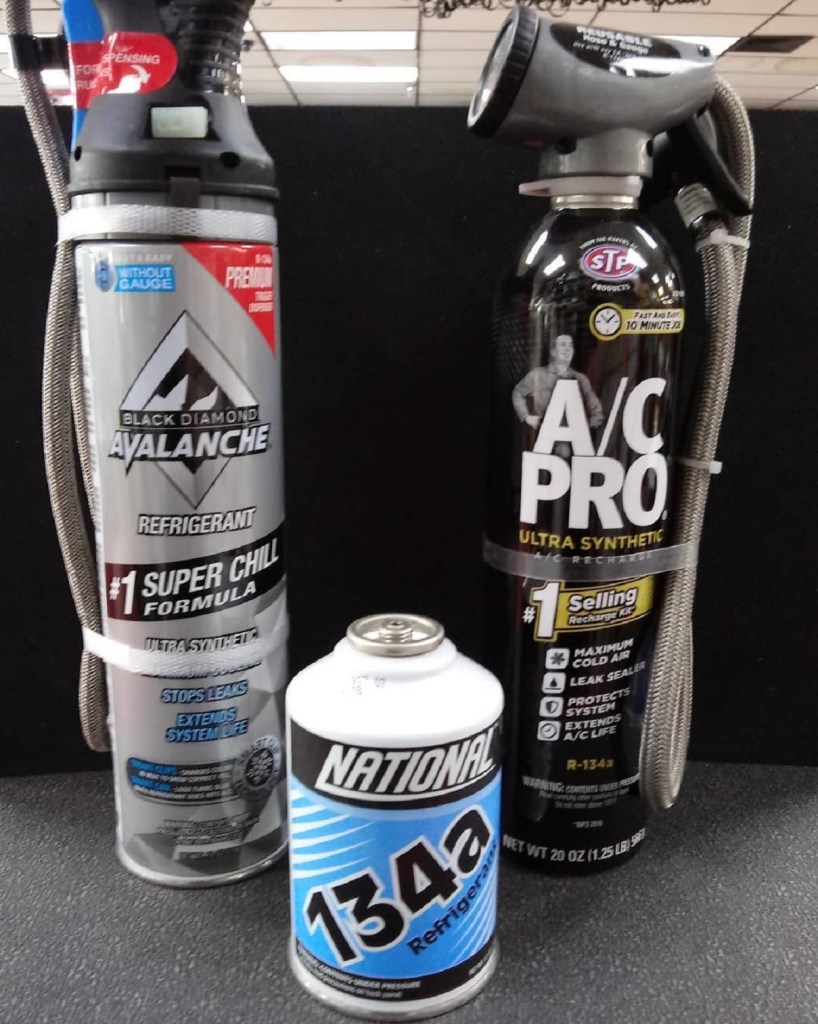
Your Car’s A/C May Be Due for a Recharge
Summer heat requires more from your car than just swapping on dry-weather performance tires. Although it isn’t a usual maintenance item, your car’s A/C can also degrade over time. And no one wants to be stuck in a hot car while you’re going on a road trip. One of the simplest ways to keep cool is checking to see if your car’s A/C needs a recharge.
How to tell if your car’s A/C needs a recharge
Your car’s A/C system has several components, AutoZone explains, though there are several different types of A/C. A compressor and a condenser are found on all of them. Some pair that with an orifice tube and an accumulator, while others use an expansion valve and receiver-desiccator. Regardless, what actually helps cool incoming air is the refrigerant. That’s what an A/C recharge does—it replenishes your car’s refrigerant supply.
Automotive A/C works by regulating the refrigerant’s pressure. The refrigerant, which is normally a vapor, gets compressed, which also causes it to heat up. The condenser, as the name suggests, blows air over it to condense it into a high-pressure liquid. From there, the steps change slightly based on which specific A/C system your car has. But the general process involves filtering and drying the liquid refrigerant and letting it expand back into a gas. Due to thermodynamics, this causes it to cool down.
As Autoblog explains, your car’s A/C needs to be sealed for proper function. Not only to maintain pressure but to keep the refrigerant contained. If there’s a leak, you’ll steadily notice your A/C becomes less effective. In addition, a special switch monitors the refrigerant pressure. If it falls too low, the switch won’t activate the A/C system.
If that happens, your A/C system needs a recharge.
How to recharge the A/C yourself

It’s not unusual for small leaks to occur over time, Firestone reports. Like any automotive component, the A/C system is subject to heat and wear. For most people, an A/C recharge can be done with an inexpensive kit.
These A/C recharge kits can be found at your local auto parts store, and are fairly simple to use. They’re essentially a refrigerant canister with a trigger, a pressure gauge, and a hose. After locating and removing the A/C low-pressure cap, get the system going.
Secure the hose to the low-pressure inlet, and monitor the gauge. As the refrigerant flows into the system, the pressure will rise until it’s in a recommended zone, O’Reilly explains. Once that’s done, remove the hose, and put the cap back on.
There are a few things to be aware of before you recharge the A/C, though. Firstly, AutoZone recommends not recharging if the outside air temperature is below 55°F. Secondly, not every refrigerant is easily replaceable.
When car A/C systems first started appearing in the 1930s, the refrigerant of choice was Freon, aka R-12, Hagerty explains. Unfortunately, R-12 is a CFC, which causes holes in the ozone layer. CFCs were outlawed, and by 1995, cars had switched to R-134a, which, confusingly, is sometimes also called Freon. R-134a is an HCFC, which doesn’t damage the ozone. However, it can become corrosive if contaminated with water and doesn’t cool as well as R-12. Also, it’s a somewhat potent greenhouse gas.
For these reasons, especially the last one, car A/C systems are starting to convert to R-1234yf, BGProd reports. It’s already in use in a few cars. And by 2025, all US-market cars will be required to run R-1234yf, Sun Auto Service reports.
Seeing if the A/C needs additional work
What does this mean when it comes to A/C recharges? Firstly, if you have an R-12-based system, it can be modified for R-134a. The two refrigerants should not be mixed, and they’re not drop-in replacements. R-1234yf and R-134a are also not interchangeable. But if you’ve got a pre-1995 car, and you’ve got a serious A/C leak, you won’t be able to recharge it with new R-12. You’ll need a whole new system.
Speaking of leaks, if you’re having to constantly recharge your A/C, it’s likely the system has sprung a rather large one. It’s possible, Hagerty reports, to locate the leak yourself using UV-sensitive dye. Or, if you take it to a mechanic, they’ll evacuate the system and recharge it, along with using dye, to try and spot any leaks.
In addition, as with any other mechanical component, the individual A/C system components can break, YourMechanic explains. For example, leaks and excessive noise can be a sign of a worn compressor. Said compressor also requires lubrication from time to time.
If you’re noticing a build-up of moisture on the car’s windows, your accumulator may be failing. And if even after an A/C recharge, cold air still won’t blow, one of the other components could be on the fritz.
Follow more updates from MotorBiscuit on our Facebook page.


